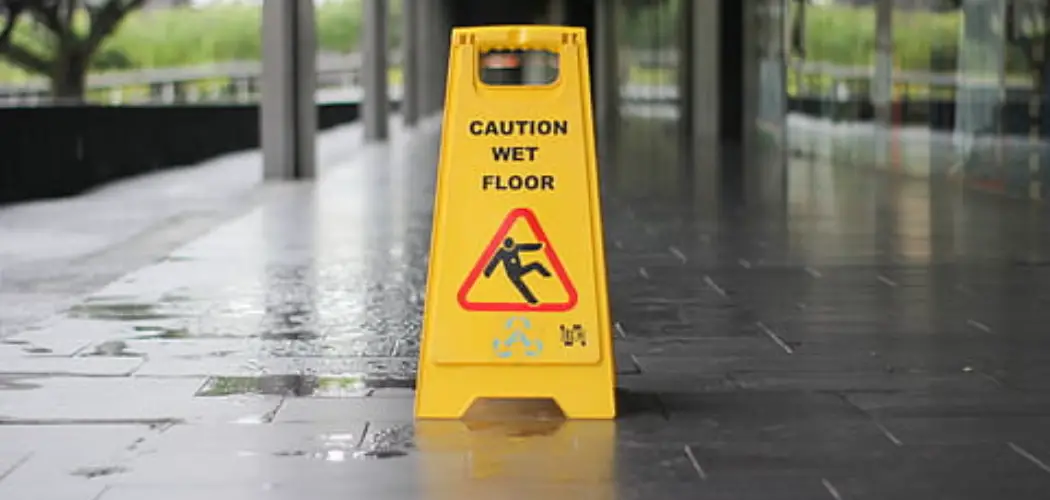Slipping on wet floors can be dangerous and lead to serious injury. Falling on a wet floor can cause broken bones, head trauma, sprains, and other injuries. In addition to physical harm, slips and falls can cause emotional harm, such as fear of entering areas with slippery surfaces or losing confidence in performing activities that involve walking on wet surfaces.
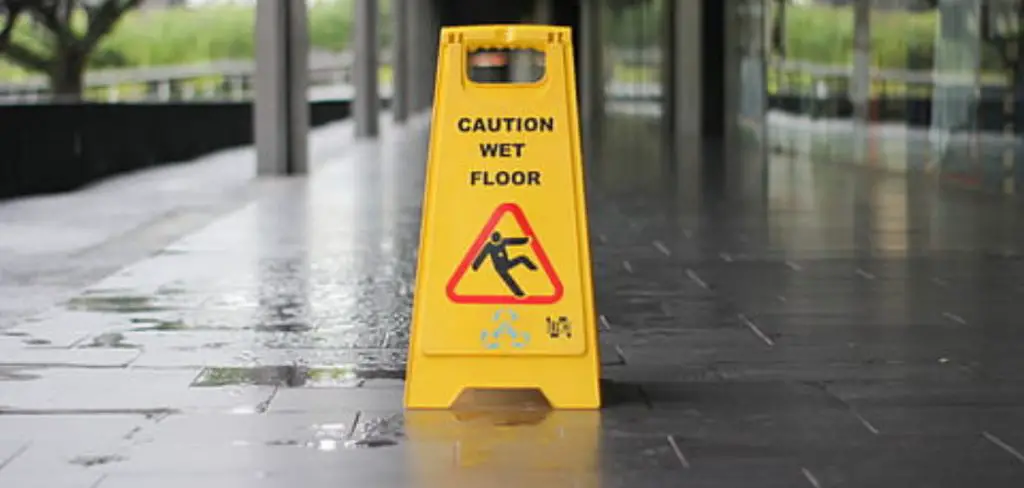
Safety is the main advantage of learning to prevent slipping on wet floors. Slips and falls are common causes of injury, especially among elderly individuals.
Knowing proper techniques for avoiding slips can help protect you and your family from serious injury or even death due to a slip-related accident. You can find step-by-step instructions on how to prevent slipping on wet floors in this blog article.
Step-by-step Instructions for How to Prevent Slipping on Wet Floors
Step 1: Inspect the Floors
Regularly inspect floors for any signs of moisture or wetness. Look for damp patches, stains, or standing water—place mats around the area strategically to absorb any wetness and reduce slipping. Consider non-slippery solutions such as rugs, textured tiles, adhesive strips, treads, and anti-slip floor coatings.
Step 2: Clean Up Spills Quickly
Have a cleaning plan in place to address any spills quickly. Keep the necessary supplies, such as mops, buckets, towels, and cleaning solutions. Put up signs warning people about wet floors so they can take precautions when walking in the area.
Step 3: Provide Slip-Resistant Footwear
Offer slip-resistant shoes to employees or visitors likely to walk around on wet floors. This will help reduce their risk of slipping and falling. Take extra caution when washing floors, such as using a squeegee to dry the area quickly and not leaving puddles of water.
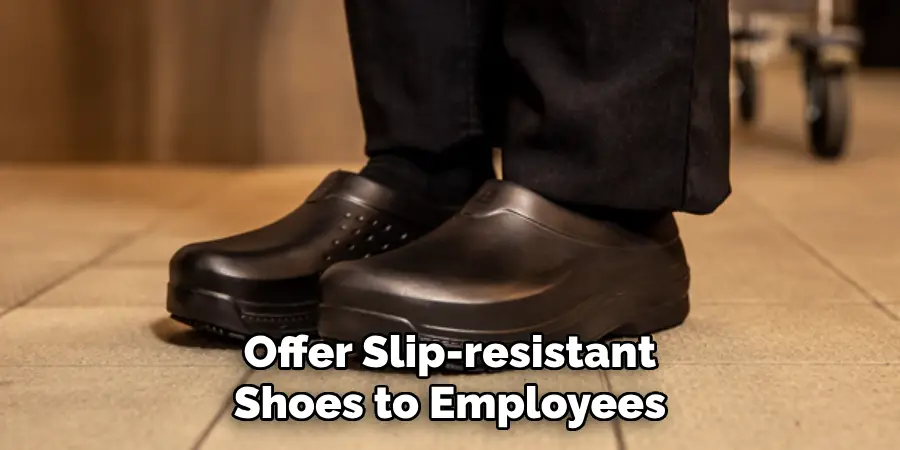
Step 4: Use Door Mats
Place mats at entryways to collect moisture from shoes before people enter the building. This helps reduce the risk of slipping on wet floors inside. Enforce rules that discourage running or horseplay in areas with wet floors. These activities increase the risk of injury due to slipping and falling.
Step 5: Use Non-Slip Cleaning Agents
When washing floors, use a cleaning agent specifically designed for slippery surfaces that can also help reduce the risk of slipping on wet floors. Educate staff and visitors on safety when walking around wet floors. Teach them what to look for and how to stay safe. Encourage them to take caution and watch their step in areas with a potential risk of slipping.
Following these steps can help reduce the risk of slipping on wet floors and ensure that everyone in your building stays safe.
Precautions for How to Prevent Slipping on Wet Floors
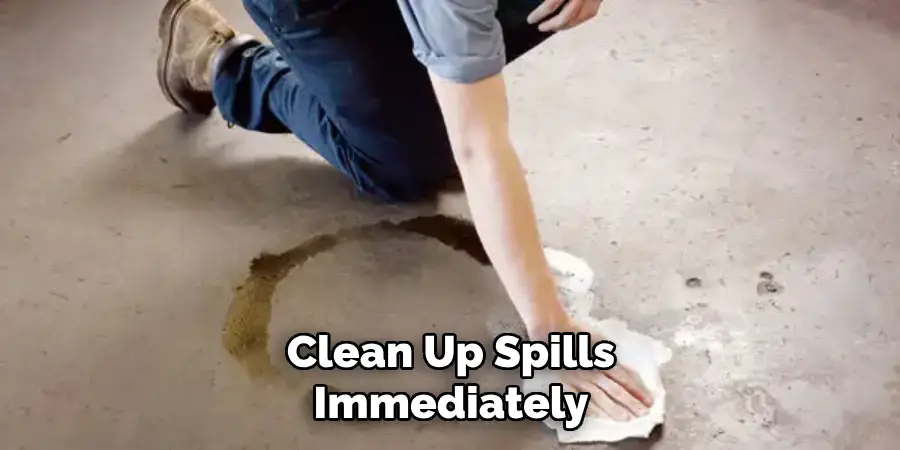
- Choose shoes or boots with anti-slip soles that securely grip wet surfaces. Avoid wearing high-heeled, open-toe, and flat-soled shoes when working in slippery areas.
- Place rubberized mats with textured surfaces on wet floors. This provides a non-slip surface for walking on and will help to prevent slips and falls.
- Clean up spills immediately with absorbent materials such as cloth, sawdust, or paper towels. Only attempt to walk through them after completely cleaning the area.
- Place warning signs in areas where there could be potential slipping hazards.
- Keep floors dry and clean at all times to eliminate potential slipping hazards. Regularly mop or sweep the floor with a non-slip cleaning product designed for wet surfaces.
- Avoid walking on wet floors if possible, and use the handrails or lean against walls when navigating through potentially slippery areas.
- Wear a back brace or support belt if you must work on wet floors for extended periods, and be sure to take frequent breaks. Stand with your feet slightly apart to increase balance and stability.
These safety tips will help you safely navigate wet floor areas, reducing the risk of slipping and falling. Stay alert and use caution when walking on wet floors.
How Can You Identify Floor Areas That May Be More Hazardous When Wet?
Slippery floors are everywhere, from restaurants and supermarkets to schools and hospitals. It is important to identify areas that may be more hazardous when they become wet to prevent slips and falls on wet floors. One way to do this is to look for changes in flooring surfaces, such as those between carpets, rugs, and hard surfaces.
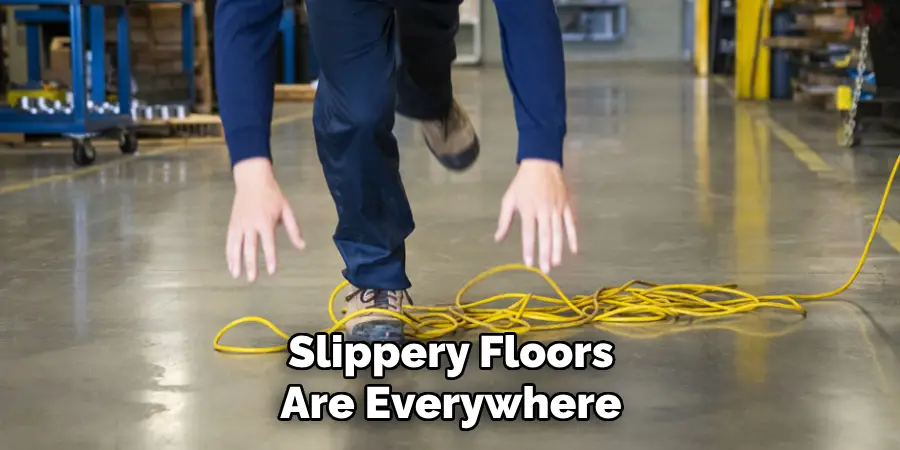
These areas are more likely to become wet and create a slippery surface when walked on. Additionally, grout lines between tiles can act as channels for water, creating slip hazards.
In addition to looking for changes in flooring surfaces, you should note any places where water may accumulate or pool, such as at the base of stairs or near doorways. These areas can become slippery when wet and should be avoided or marked with a warning sign.
Finally, pay attention to the flooring material you are walking on. Some materials, such as polished marble floors or linoleum tiles, can become slick quickly when exposed to liquids. If you notice your feet becoming slick while walking on these surfaces, take extra care to avoid slipping.
How Often Should You Inspect Your Floors for Possible Hazards and Potential Slip-and-fall Risks?
To ensure that your floors are safe and don’t pose a risk of slipping, it is important to inspect them regularly. The inspection frequency should depend on the type of floor, its environment (e.g., exposure to moisture), and the amount of traffic that passes across it.
High-traffic areas with frequent wetness should be inspected several times a day, while areas that are less frequently used or exposed to moisture can be inspected every week. In any case, it is important to scrutinize the floors and look for signs of wear, damage, and deterioration, which may increase the likelihood of slipping.
Some specific areas to pay attention to when inspecting your floors include edges; corners; seams; grout lines; and any area exposed to moisture. Any chips, scratches, or other damage should be repaired right away. It is also important to deep clean floors regularly to remove contaminants such as dirt and grease to reduce the risk of slipping.
By conducting regular inspections, cleaning floors thoroughly, and making any needed repairs, you can help to reduce the potential for slips and falls. This will help create a safe environment where people can move around confidently without fear of slipping or falling.
What Common Mistakes People Make That Increase Their Chances of Slipping on Wet Floors?
One of the most common mistakes people make is to stroll on a wet floor. This increases the chances of slipping, reducing the time available for your feet to adjust and grip the surface. Another mistake is failing to wear shoes with good traction.
Shoes should have a good tread pattern and non-slip soles to provide extra grip on wet floors. Finally, people may need to take notice of warning signs when entering a wet area, which can lead to slips and falls if the conditions are hazardous.
To prevent slipping on wet floors, being aware of your environment and watching for any potential hazards is important. Additionally, wear shoes with good traction and slow down when walking on wet surfaces. Taking these simple precautions can help to minimize your chances of having an accident.
Following the advice outlined here, you can enjoy a safe and secure environment free from slips and falls caused by wet surfaces. Keeping these tips in mind is one of the most important steps toward staying safe on wet floors.
Is There Anything Else You Should Know About How to Prevent Slipping on Wet Floors?
Yes. In addition to the steps outlined above, there are some additional tips and considerations that can help you prevent slipping on wet floors:
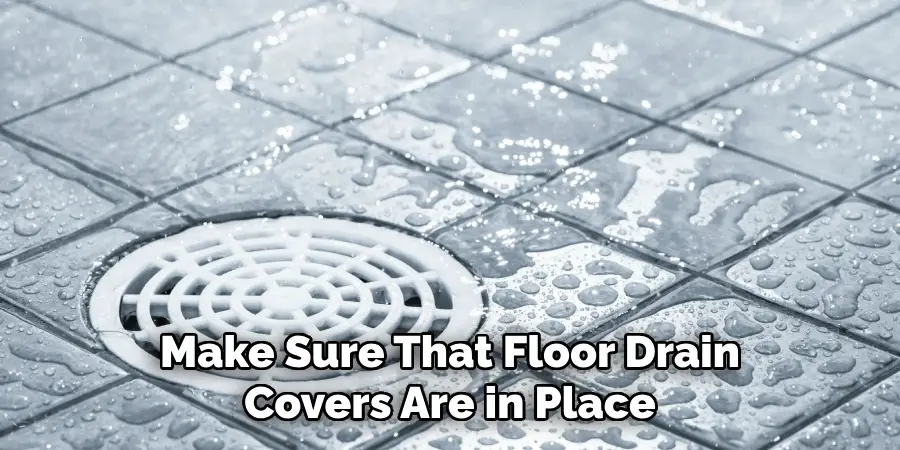
- Make sure that floor drain covers are in place and functioning properly. This will keep water from pooling in areas where it is not needed or wanted.
- Remove all objects from the floor that may cause someone to trip or slip. This includes mats, rugs, and other items that can make the floor slick when wet.
- Install anti-slip coatings on the floor surface. These coatings provide extra grip for shoes and help prevent slipping on wet floors.
- Place warning signage in areas with slippery surfaces. This will remind people of the potential hazards and encourage them to be more cautious.
- Encourage staff and visitors to wear appropriate footwear where floors may be wet. Shoes with non-slip soles are essential for these types of environments.
Following these tips and remaining vigilant can help prevent slipping on wet floors in your home and workplace. You can ensure that everyone stays safe and secure with a few simple steps.
Conclusion
In conclusion, it is important to remember that wet floors can be dangerous and cause slips, trips, and falls. To prevent slipping on wet floors, the best practice is to take preventive measures before a problem arises.
This includes installing no-slip flooring materials like rubber or anti-slip mats, using caution signs in high-traffic business areas, placing absorbent mats near wet areas, and providing proper footwear for employees.
Taking proactive steps to prevent slips on wet floors will help ensure the safety of your staff and customers. Reading this post has helped you learn how to prevent slipping on wet floors. Make sure the safety precautions are carried out in the order listed.

